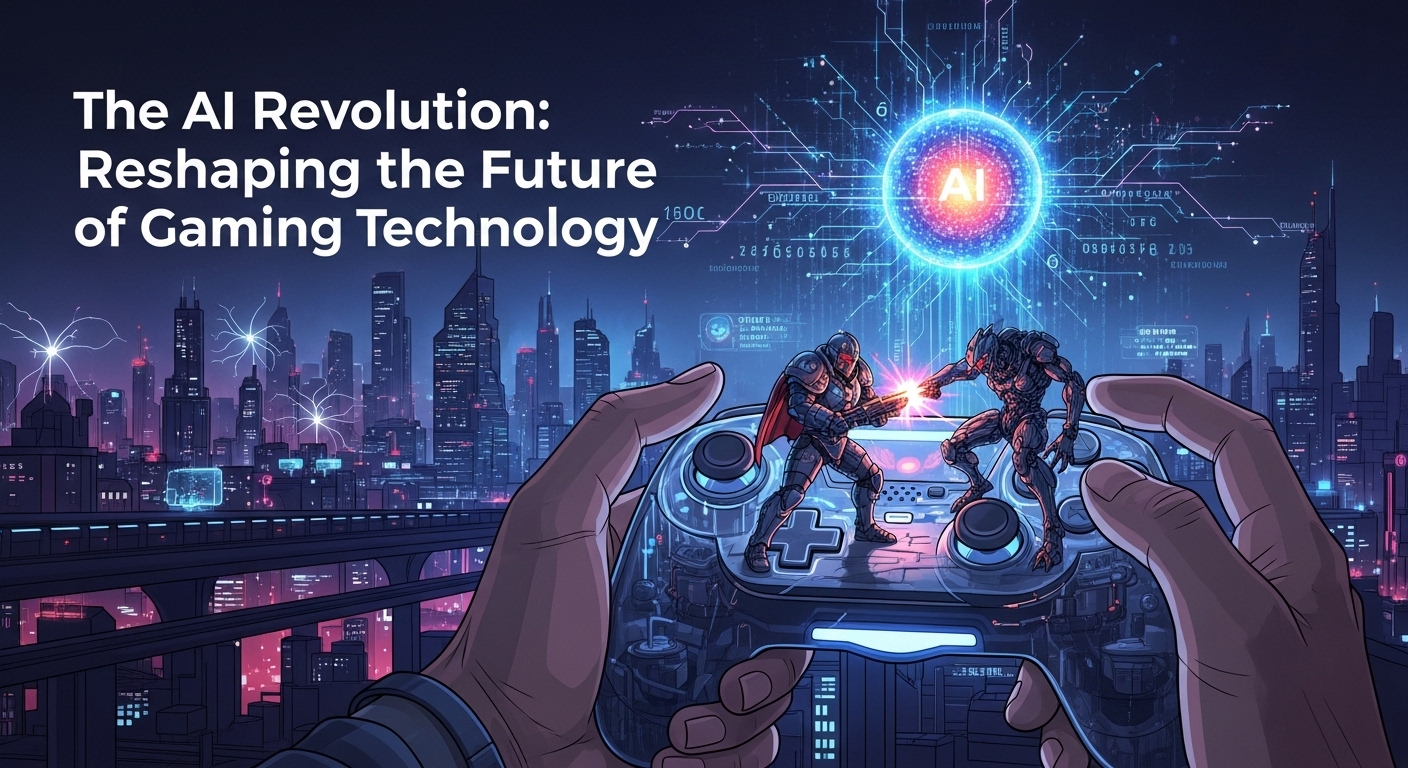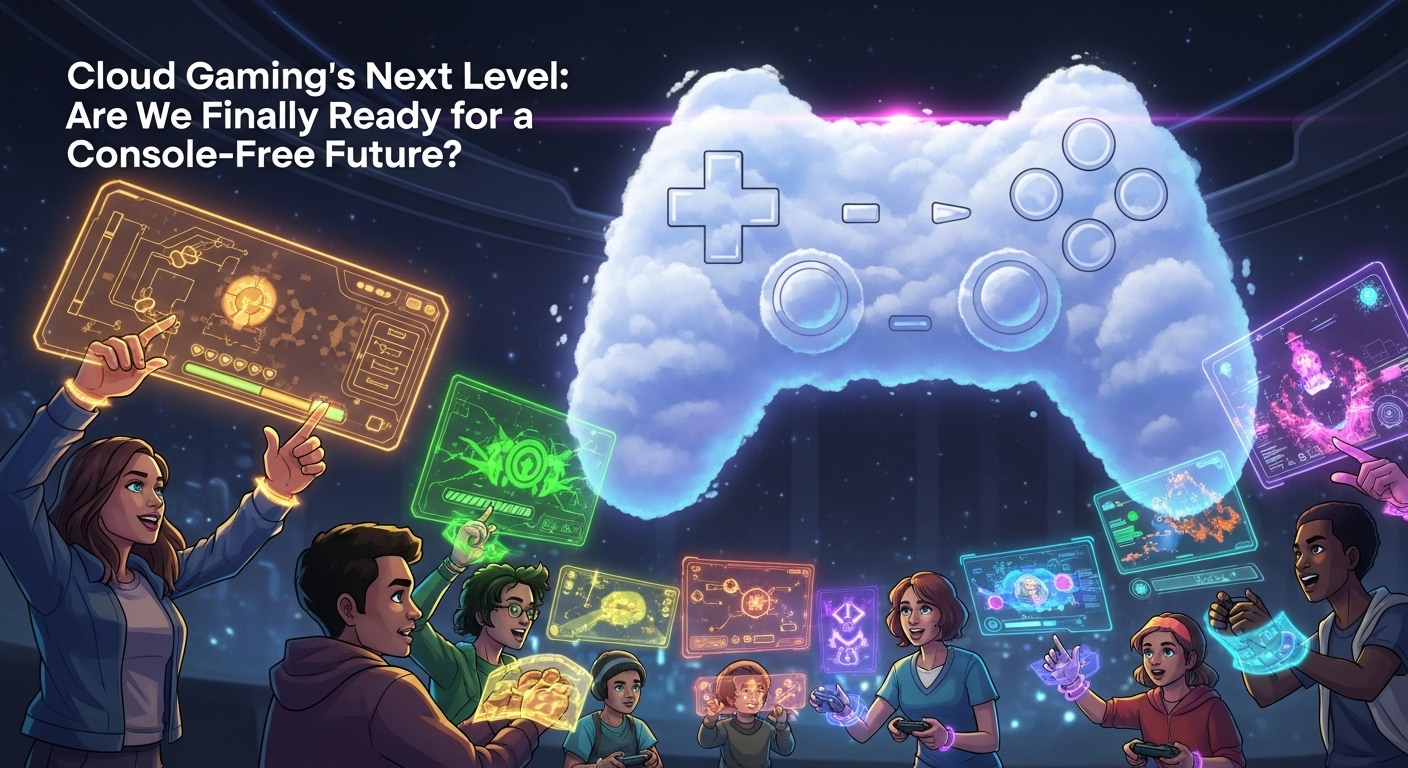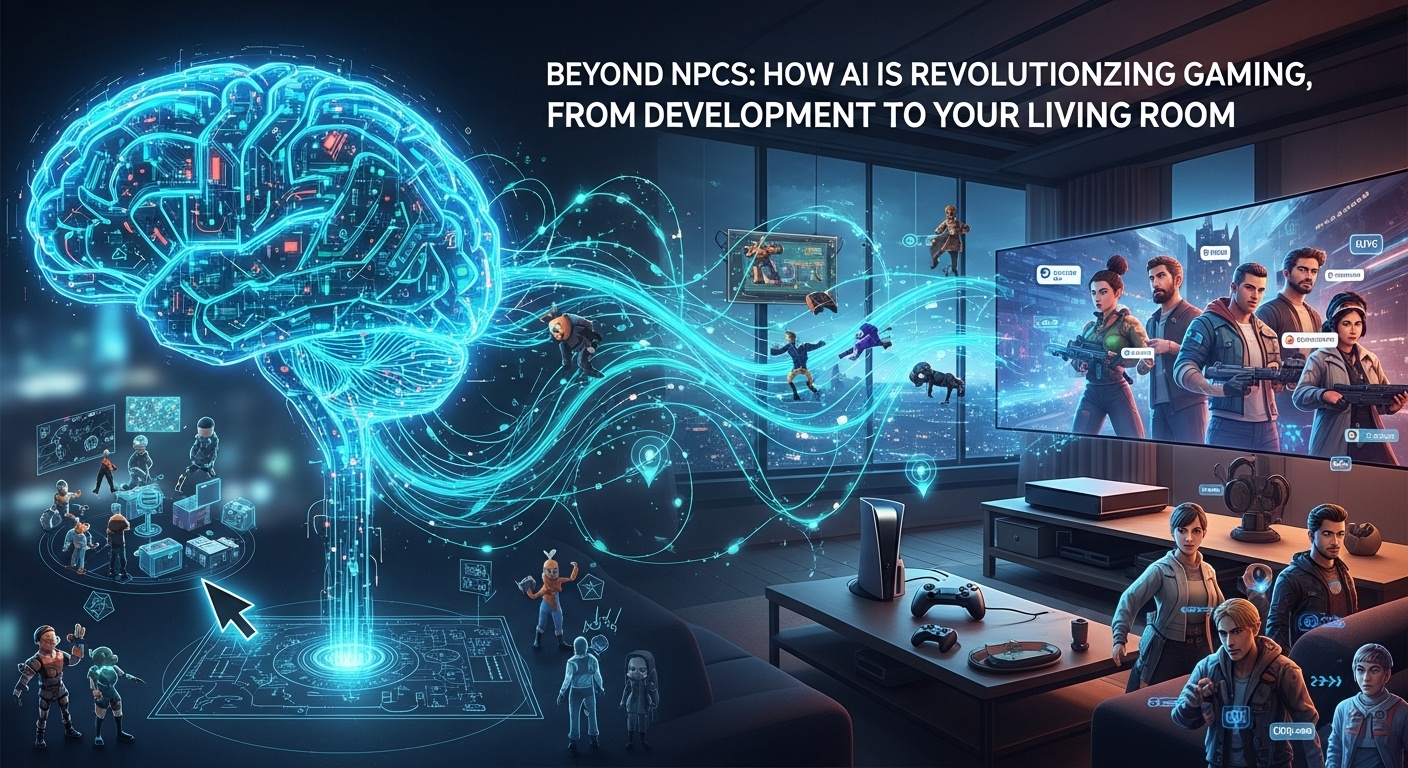The Dawn of a New Era in Interactive Entertainment
For decades, video games have been at the forefront of technological innovation. From the simple 8-bit sprites of the past to the photorealistic 4K worlds of today, the industry has consistently pushed the boundaries of what’s possible. Now, we stand on the precipice of another monumental leap, one powered by a force that is reshaping our world: Artificial Intelligence. AI is no longer a science-fiction concept reserved for futuristic movies; it’s a powerful and tangible force actively revolutionizing gaming technology. It’s transforming how games are made, how they are played, and the very nature of the stories they can tell. This isn’t just about better graphics or faster loading times; it’s about creating truly dynamic, intelligent, and personalized interactive experiences that were once the stuff of dreams.
Forget the clunky, predictable enemies that walk in predefined patterns. Imagine allies who remember your choices, worlds that generate themselves with breathtaking detail, and challenges that adapt perfectly to your skill level. This is the promise of AI in gaming, a promise that is already beginning to unfold. In this deep dive, we’ll explore the incredible ways AI is fundamentally altering the landscape of gaming, from the code to the controller.
Beyond Scripted Encounters: The Rise of Intelligent NPCs
One of the most exciting frontiers for AI in gaming is the evolution of Non-Player Characters (NPCs). For years, NPCs have been the lifeblood and, often, the weakest link in immersive game worlds. Their repetitive dialogue and scripted behaviors can quickly shatter the illusion of a living, breathing universe.
From Predictable Paths to Dynamic Personalities
Traditionally, NPCs have been little more than complex puppets. Their actions, dialogues, and reactions were all meticulously scripted by developers. While this method can produce memorable characters, it’s inherently limited. You’ve likely experienced this: an NPC repeats the same line of dialogue endlessly, or a guard walks the same exact path, oblivious to the chaos unfolding just out of their line of sight. This predictability, while functional, creates a barrier to true immersion. The world feels less like a real place and more like a clockwork stage set.
How AI Creates Believable Characters
Modern AI is smashing these limitations. By leveraging machine learning and advanced behavioral algorithms, developers are creating NPCs that can learn, adapt, and react in genuinely surprising ways. A prime example, though a stepping stone, is the Nemesis System in Monolith Productions’ *Middle-earth: Shadow of Mordor*. In this game, enemy orc captains remember their encounters with the player. If you defeat one and they survive, they might return with a scar and a grudge. If they defeat you, they get promoted and grow stronger, taunting you about your previous failure. This system creates personal stories and rivalries that are unique to each player’s journey. Now, imagine this concept amplified by today’s AI. NPCs can analyze player behavior to develop complex relationships, form factions, and pursue their own goals within the game world, independent of the player’s direct actions. They can engage in unscripted, context-aware conversations, making every interaction feel authentic and meaningful.
Building Infinite Worlds: AI in Procedural Content Generation
Creating vast, detailed open worlds is one of the most time-consuming and expensive aspects of modern game development. This is where AI-powered Procedural Content Generation (PCG) comes in, acting as a force multiplier for creative vision.
The Old Way: Repetitive Landscapes
PCG is not a new concept. Games like *No Man’s Sky* famously use algorithms to generate an entire universe of planets. However, early PCG often resulted in worlds that felt vast but empty or repetitive. The algorithms could create endless variations of terrain, but they lacked the ‘human touch’—the logical placement of landmarks, the narrative flow of a landscape, and the handcrafted feel that makes a world believable. You might get a million different trees, but they all felt like the same tree.
The AI Advantage: Crafting Unique and Coherent Experiences
AI-driven PCG is a game-changer. Instead of just randomly placing assets, AI can be trained on vast datasets of handcrafted levels and real-world geography. It learns the ‘rules’ of good design: how a river should flow, where a village might logically be situated, or how to create a dungeon that is both challenging and navigable. This allows developers to generate massive, unique, and coherent worlds that feel intentionally designed. This advancement in gaming technology not only saves thousands of hours of manual labor but also opens the door to truly endless replayability, where every new game presents a genuinely new world to explore.
AI as a Co-Developer: Streamlining Game Creation
The impact of AI isn’t just confined to what we see on screen; it’s also revolutionizing the behind-the-scenes process of making games. AI is becoming an indispensable tool for developers, automating tedious tasks and empowering human creativity.
Automating the Tedious Tasks
Game development involves countless repetitive tasks. Think of quality assurance (QA) testing, where testers have to play through sections of a game over and over to find bugs. AI agents can now be deployed to do this 24/7, exploring every nook and cranny of a game world and reporting bugs with superhuman efficiency. AI can also assist in creating animations, generating variations of textures and 3D models, and even balancing game mechanics by simulating thousands of matches to identify overpowered strategies. By offloading this grunt work, AI frees up developers to focus on what they do best: being creative.
Personalizing the Player Experience
One of the most subtle yet powerful applications of AI is Dynamic Difficulty Adjustment (DDA). This is an AI system that monitors your performance in real-time and subtly adjusts the game’s difficulty to match your skill level. If you’re struggling with a particular section, the game might reduce the number of enemies or provide more health packs. If you’re breezing through, it might ramp up the challenge to keep you engaged. This ensures that the game is never too frustratingly hard or too boringly easy, creating a perfectly tailored experience that keeps players in that ideal state of ‘flow’.
The Future is Now: What’s Next for AI in Gaming?
We are only scratching the surface of what’s possible. The future of AI in gaming technology promises even more profound transformations.
Generative AI and Player-Created Content
Imagine playing an RPG where you can speak to any character about any topic, and they respond with a unique, AI-generated personality and knowledge. Or picture a game where you can describe a quest you want to go on, and the AI builds it for you in real-time. This is the potential of generative AI, which will empower players to become co-creators, shaping their own narratives and adventures within the game’s universe.
Hyper-Realism and Smarter Graphics
AI is already enhancing graphics through technologies like NVIDIA’s DLSS (Deep Learning Super Sampling), which uses AI to upscale images to higher resolutions with incredible performance gains. In the future, AI will simulate even more realistic physics, character animations, and environmental effects, blurring the line between the virtual and the real.
Conclusion: Welcome to the Next Level of Gaming
The integration of Artificial Intelligence is not just another incremental update in the world of gaming; it is a paradigm shift. It is fundamentally changing the relationship between the player and the digital world. We are moving away from static, scripted experiences and towards living, breathing simulations that can react, adapt, and grow alongside us. From NPCs that feel like genuine companions and adversaries to infinite, unique worlds that beg to be explored, AI is unlocking a new dimension of immersion and creativity. The future of gaming technology is intelligent, personalized, and boundlessly imaginative. The next level is here, and it’s powered by AI. What AI-driven feature are you most excited to see in the games of tomorrow? Let us know in the comments below!


